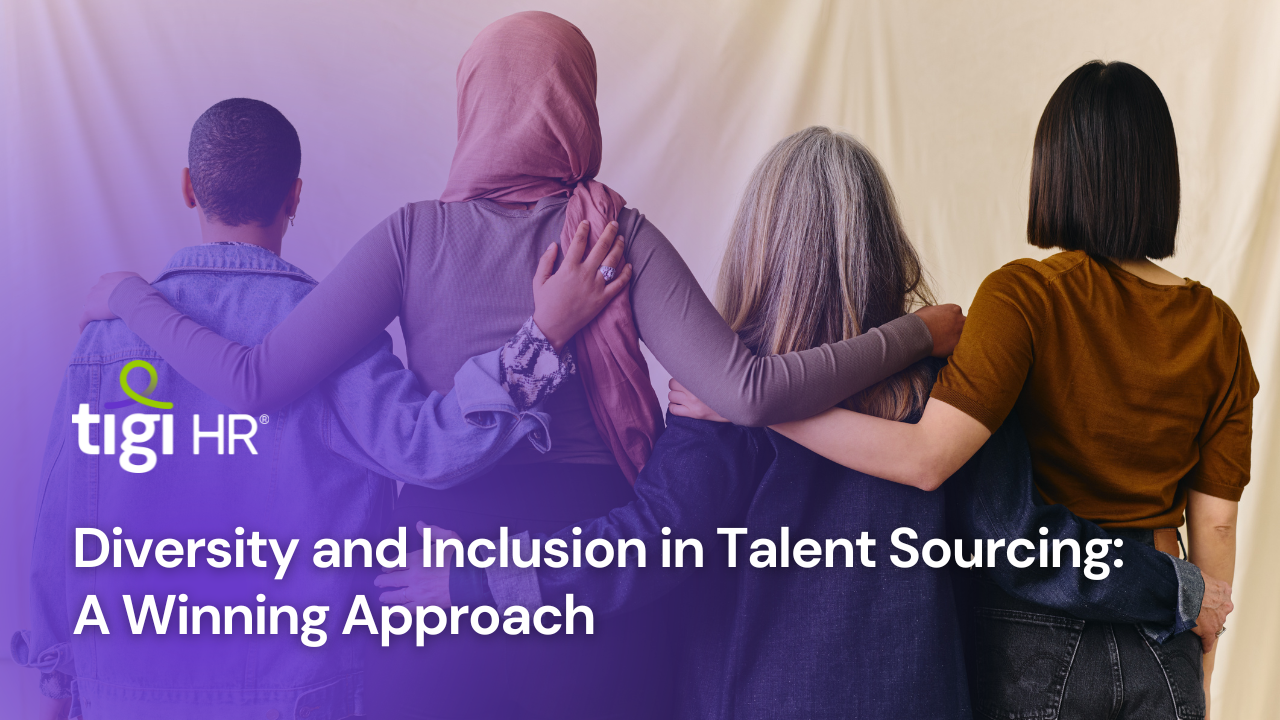In today’s rapidly changing business landscape, companies are recognizing the undeniable importance of diversity and inclusion in their workforce. A diverse and inclusive workplace fosters innovation, enhances employee engagement, and ultimately contributes to an organization’s success. As a result, many businesses are reevaluating their talent sourcing strategies to ensure they attract a broader and more varied pool of candidates. This article explores the critical role of diversity and inclusion in talent sourcing, providing authentic statistics and insights to emphasize the benefits and challenges associated with this approach.
- Understanding Diversity and Inclusion
Before delving into the specifics of talent sourcing, it’s crucial to define diversity and inclusion. Diversity encompasses the range of human differences, including but not limited to race, ethnicity, gender, age, sexual orientation, disability, and more. Inclusion, on the other hand, is the active, intentional effort to create an environment where all individuals feel valued, respected, and supported.
When it comes to talent sourcing, embracing diversity and inclusion means actively seeking candidates from a wide array of backgrounds and experiences and ensuring they feel a sense of belonging within the organization.
- The Business Case for Diversity and Inclusion
A growing body of research supports the idea that diversity and inclusion in the workplace lead to improved business outcomes. Here are some key statistics and insights:
2.1. Enhanced Innovation
According to a study by Boston Consulting Group, companies with more diverse management teams generate 19% higher revenue from innovation compared to those with less diverse teams. Diverse teams bring different perspectives and approaches to problem-solving, fostering creativity and innovation.
2.2. Increased Profitability
A McKinsey report found that companies in the top quartile for ethnic and cultural diversity on their executive teams were 33% more likely to have above-average profitability. Similarly, those in the top quartile for gender diversity were 21% more likely to outperform their counterparts.
2.3. Better Decision-Making
HBR (Harvard Business Review) highlights that diverse teams make better decisions. In diverse groups, people approach problem-solving from various angles, which helps identify potential pitfalls and leads to more comprehensive decisions.
2.4. Improved Employee Engagement
Diverse and inclusive workplaces tend to have higher levels of employee engagement. The Deloitte Global Human Capital Trends Report notes that organizations focusing on diversity and inclusion are more likely to report increased employee engagement (83% vs. 60%) and better business results (63% vs. 49%).
2.5. Attracting Top Talent
Companies that prioritize diversity and inclusion attract a broader pool of top talent. A Glassdoor survey revealed that 67% of job seekers consider diversity a crucial factor when evaluating job offers.
- Challenges in Diversity and Inclusion
While the benefits of diversity and inclusion are well-documented, organizations often face challenges in implementing these principles. Some of the most common hurdles include:
3.1. Bias in Recruitment
Unconscious bias in the recruitment process can result in discriminatory hiring practices, preventing diverse candidates from getting a fair chance. A study by the National Bureau of Economic Research found that job applicants with African-American-sounding names received 50% fewer callbacks than those with white-sounding names.
3.2. Lack of Diverse Networks
Recruiters might struggle to find diverse talent if they primarily rely on their existing networks, which tend to be homogenous. Building connections with diverse communities and organizations is essential to source candidates from different backgrounds.
3.3. Stereotyping
Stereotypes can influence hiring decisions, leading to a lack of diversity. To mitigate this, organizations must provide training to help employees recognize and combat bias.
3.4. Inclusive Company Culture
Even if a diverse workforce is achieved, it’s essential to foster an inclusive culture where all employees feel valued. Inclusive practices and policies are vital to retaining diverse talent and reaping the benefits of diversity.
- A Winning Approach to Talent Sourcing
To overcome these challenges and reap the benefits of diversity and inclusion, organizations must adopt a winning approach to talent sourcing. Here are some effective strategies:
4.1. Inclusive Job Descriptions
Start by crafting inclusive job descriptions that emphasize the company’s commitment to diversity and inclusion. Use gender-neutral language and avoid biased terms that could discourage diverse candidates from applying.
4.2. Broaden Your Candidate Pool
To attract diverse talent, expand your candidate pool by utilizing various platforms, job boards, and recruiting sources. Consider partnerships with organizations that focus on diverse talent, such as minority and women’s associations.
4.3. Blind Recruitment
Implement blind recruitment processes, where applicant information that reveals their gender, race, or other personal characteristics is removed during initial assessments. This helps eliminate unconscious bias during the screening process.
4.4. Diverse Interview Panels
Conduct interviews with diverse panels of interviewers. This not only sends a message of inclusion to candidates but also ensures that different perspectives are considered during the hiring process.
4.5. Training and Education
Provide diversity and inclusion training for all employees involved in the recruitment process. These programs can help team members recognize and overcome unconscious bias.
4.6. Employee Resource Groups
Encourage the formation of employee resource groups (ERGs) within your organization. ERGs provide a platform for employees to connect, share experiences, and contribute to an inclusive workplace culture.
4.7. Inclusive Onboarding
Once diverse talent is hired, it’s crucial to have an inclusive onboarding process. This helps new employees feel welcome, supported, and part of the organization from day one.
4.8. Continuous Monitoring and Evaluation
Regularly monitor and evaluate your diversity and inclusion efforts. Collect and analyze data on demographics, hiring outcomes, and employee satisfaction to make data-driven decisions.
- Success Stories
Several organizations have successfully embraced diversity and inclusion in their talent sourcing efforts. Let’s explore a few examples:
5.1. Salesforce
Salesforce has made diversity and inclusion a core part of its corporate culture. The company uses its platform to promote pay equality, and it has set ambitious diversity goals. As of 2022, the company reported that 49% of its global workforce are women, and 34% of its U.S. workforce are from underrepresented ethnic backgrounds.
5.2. Microsoft
Microsoft has a robust diversity and inclusion strategy that includes transparency and accountability. The company publishes an annual diversity and inclusion report, detailing its progress in these areas. Microsoft has made strides in hiring more women and underrepresented minorities, particularly in technical roles.
5.3. Airbnb
Airbnb has implemented a program called “Project Lighthouse” that aims to combat discrimination on its platform. The company has also focused on increasing diversity in its workforce. By the end of 2020, Airbnb reported that 46% of its U.S. employees identified as people of color.
- Conclusion
Diversity and inclusion are not just buzzwords but a fundamental part of a winning talent sourcing strategy. Organizations that embrace diversity and inclusion not only reap the benefits of enhanced innovation, profitability, and employee engagement but also contribute to a fairer and more equitable society.
To make diversity and inclusion a reality, organizations must confront bias in recruitment, expand their networks, and create an inclusive culture. By using inclusive job descriptions, broadening candidate pools, implementing blind recruitment, having diverse interview panels, providing training, and nurturing employee resource groups, companies can build a diverse and inclusive workforce that drives success.
In a world where talent is a key competitive advantage, organizations that prioritize
diversity and inclusion in talent sourcing are poised for long-term success and a more equitable future.





